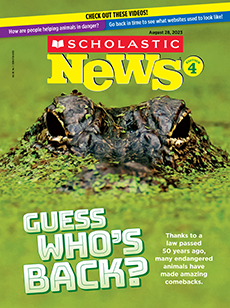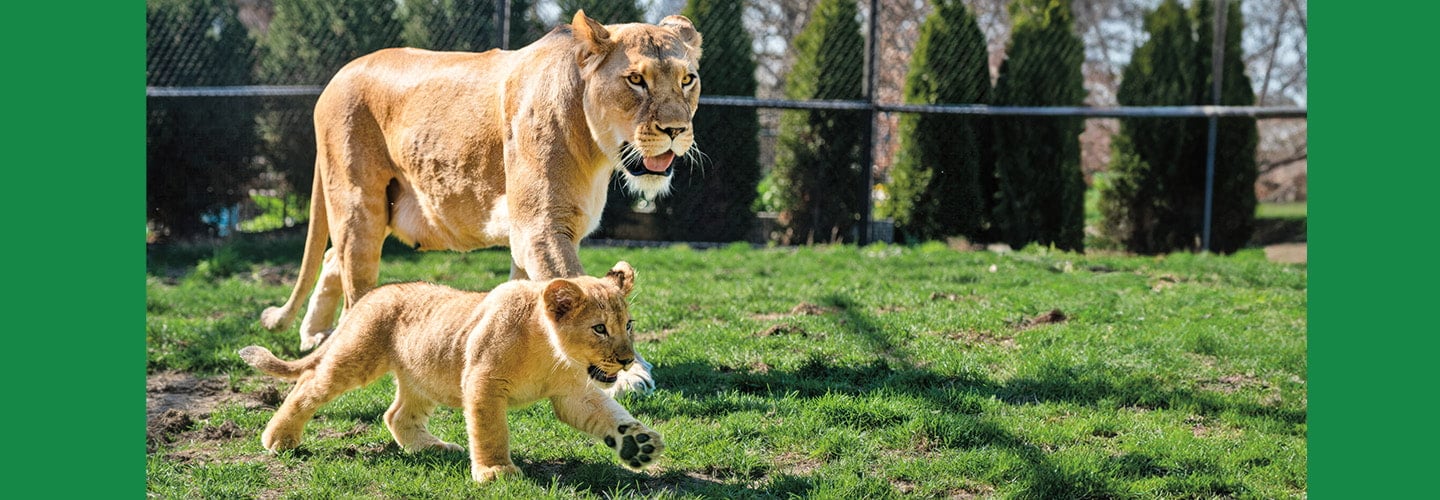Three fuzzy lion cubs roll around in the grass. Their mother chews on a bone nearby while their father keeps watch from atop a massive rock.
The area might be mistaken for the plains of Africa. But that was the scene last spring at the Lincoln Park Zoo in Chicago, Illinois. On the other side of a glass wall, kids waved at the cubs while their parents took photos.
The zoo opened its lion habitat in 2021. In addition to green spaces to roam, the area provides shade, shelter, and privacy for the big cats. The center is also home to red pandas, snow leopards, and Canada lynx. Construction took about four years and cost $41 million.
For decades, zoo animals were often kept in small cages with concrete floors.
But in recent years, many zoos have built bigger enclosures that resemble the animals’ natural habitats.
Despite these changes, critics of zoos still say they’re unethical. They argue that there’s nothing natural about keeping wild animals locked up.
Three fuzzy lion cubs roll around in the grass. Their mother chews on a bone nearby. Their father keeps watch from atop a massive rock.
The area might be mistaken for the plains of Africa. But that was the scene last spring at the Lincoln Park Zoo. That’s in Chicago, Illinois. On the other side of a glass wall, kids waved at the cubs while their parents took photos.
The zoo opened its lion habitat in 2021. It has green spaces to roam. The area also provides shade, shelter, and privacy for the big cats. The center is home to red pandas, snow leopards, and Canada lynx too. Construction took about four years. It cost $41 million.
For decades, zoo animals were often kept in small cages with concrete floors. But in recent years, many zoos have built bigger enclosures. These enclosures resemble the animals’ natural habitats.
Despite these changes, critics of zoos still say they’re unethical. They argue that there’s nothing natural about keeping wild animals locked up.

